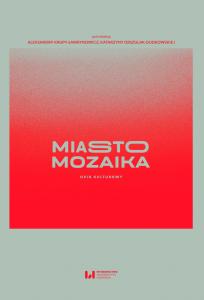Kamienica przy ul. Szewskiej 21 w Krakowie. Ślady przeszłości

Oglądaj/
Data
2023-12-30Autor
Godula-Węcławowicz, Róża
Węcławowicz, Tomasz
Metadata
Pokaż pełny rekordStreszczenie
Ostatnie dekady przyniosły eksplozję rozmaitych „zwrotów” w humanistyce. Pośród nich pojawiło się zainteresowanie przestrzenią i miejscem jako kategoriami kulturowymi. To pojęcia pokrewne, ale nie takie same. O miejscu można opowiadać na wiele sposobów, niemniej jednak łączy je podstawowe założenie – miejsce istnieje poprzez relacje z człowiekiem. Ludzkie działania, doświadczenia, doznania i emocje oraz pamięć tworzą miejsce, wyodrębniają je pośród przestrzeni i unieruchamiają w czasie. Autorzy snują opowieść o pewnym miejscu w Krakowie – kamienicy przy ulicy Szewskiej 21. Jej materialną historię ożywiają ludzie i wydarzenia, które były ich udziałem. W tej kamienicy bowiem mieszkał pisarz Melchior Wańkowicz, mieli pracownie malarze Piotr Stachiewicz i Wiesław Obrzydowski, rzeźbiarz Jan Krzyczkowski, graficzka Ewa Siedlecka i jej mąż, krytyk sztuki Adam Kotula. Tadeusz Kantor stworzył tutaj swój niepowtarzalny teatr „Cricot”. Doświadczenie czasu i miejsca, w którym żyli, współtworzyło ich tożsamość. Równocześnie ich poczynania pozostawiły ślad w pamięci historycznej, tym samym wpływając na specyfikę miejsca. Z okruchów pamięci autorzy odtwarzają semantykę miejsca – jego artystyczne genius loci. Przecież, jak pisał Michel de Certeau, „pamięć jest tylko tym, co można śnić o miejscu”. Antropologiczna narracja stara się uporządkować wspomnienia, przeżycia, sny w pewną całość i nadać jej jednorodną formę. Recent decades have seen an explosion of various “turns” in the humanities. Among these has been an interest in space and place as cultural categories. These concepts are related, but not the same. There are many ways to talk about place, but they are nevertheless united by a basic assumption – a place exists through a relationship with human beings. People’s actions, experiences, sensations and emotions and memory create the place, setting it apart from space and fixing it in time.The authors tell the story of a certain place in Cracow – a tenement house at 21 Szewska Street. Its material history is enlivened by people and the events they experienced. The writer Melchior Wańkowicz lived in this tenement house, the painters Piotr Stachiewicz and Wiesław Obrzydowski had their studios, the sculptor Jan Krzyczkowski, the graphic artist Ewa Siedlecka and her husband, the art critic Adam Kotula. Tadeusz Kantor created his unique “Cricot” Theatre here. The experience of the time and place in which they lived co-created their identity. At the same time, their actions left a trace in the historical memory, thus influencing the specificity of the place. From the crumbs of memory, the authors reconstruct the semantics of a place – its artistic genius loci. After all, as Michel de Certeau wrote, “the memorable is that which can be dreamed about a place”. The anthropological narrative tries to organise memories, experiences, dreams, into a certain whole and give it a unified form.
Collections

